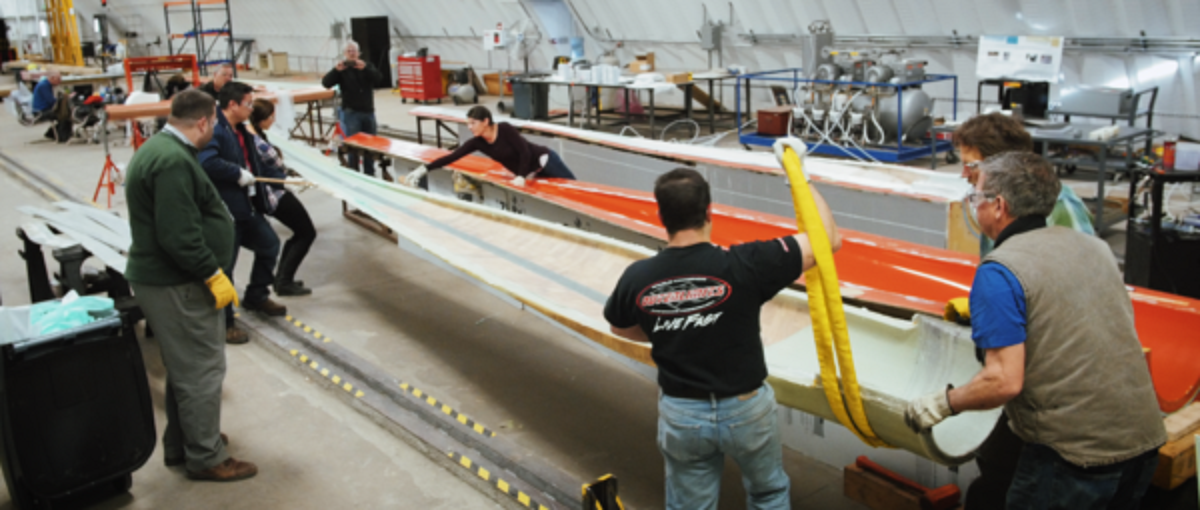
US composites institute IACMI teams has unveiled a 9 m long prototype wind blade made at its Wind Technology Area in Denver, Colorado, USA.
The prototype blade is based on an existing design from previous work conducted by the US DOE, representing a small-scale version of a utility-scale multi-megawatt blade. The new blade features innovations such as impact resistant components, continuous fiber reinforced thermoplastic parts and exterior shell components produced with less than half the normal CO2 emissions commonly emitted in wind blade manufacture.
According to the institute, commercialization of the wind blade prototype created could speed production times, reduce manufacture cost, and provide stronger, more energy-efficient blades for the US.
A large team of eleven industrial partners provided materials and on site fabrication support for blade component manufacturing and assembly.
Turbine efficiency
‘This project is a perfect example of IACMI’s strength bringing together partners representing the entire industry supply chain to demonstrate the latest technologies to address cost and performance of composites,’ said Bryan Dods, IACMI CEO. ‘Wind energy OEMs are showing great interest in the current research and development work and we anticipate continued collaboration to mature these technologies.’
‘These innovations can be deployed in the near term in existing blade manufacturing plants,’ said Derek Berry, IACMI’s wind technology area director. ‘The ability to infuse at room temperature, demold more quickly, and avoid post cure, plus use of low cost carbon fiber spar caps produced via high speed pultrusion, all contribute to reductions in the levelized cost of energy, the key measure of wind turbine efficiency.’
This story is reprinted from material from IACMI, with editorial changes made by Materials Today. The views expressed in this article do not necessarily represent those of Elsevier.






